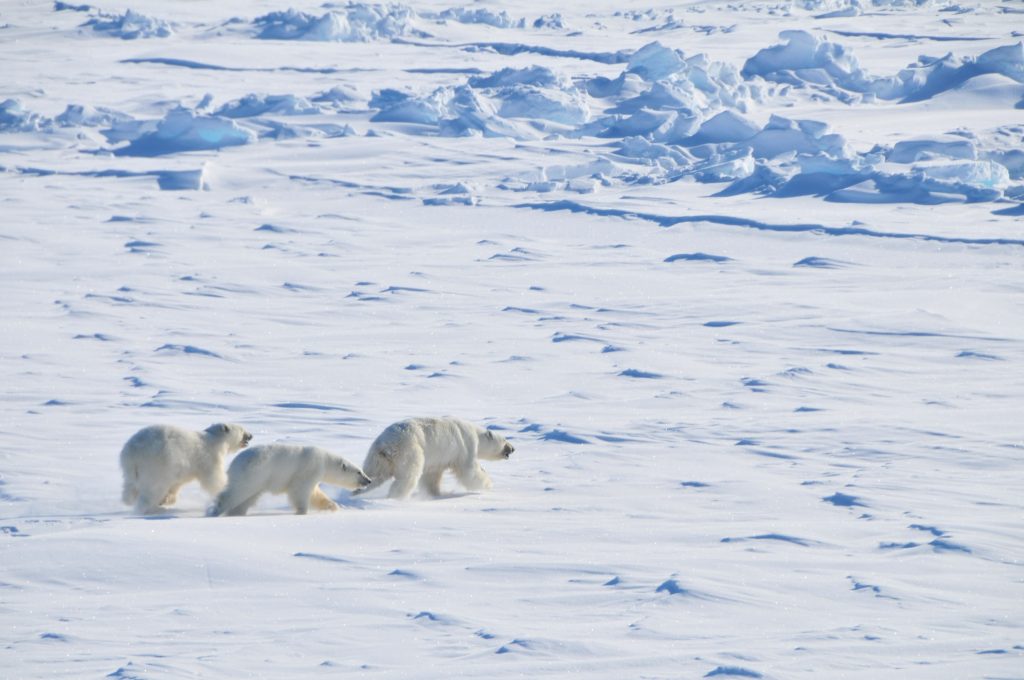The polar bear (Ursus maritimus) has become a symbolic species for the discussion of the consequences of of climate change and loss of biodiversity. The species depends on sea ice, and its survival relies on the stability of the Arctic. However, during the Pleistocene there were oscillations between glacial (cold) and interglacial (warm) periods, and the history of polar bears may hold information on how they have responded to changing climate in the past.
An international team coordinated by Dr. Charlotte Lindqvist at University at Buffalo, New York, USA, has sequenced and analyzed the genomes of several polar and grizzly bears, including 10 new genomes of contemporary polar and brown bears and a 130,000 to 115,000 years old jawbone sub-fossil of a polar bear specimen from the Svalbard Archipelago. Øystein Wiig and Lutz Bachmann from the FEZ group at the Natural History Museum Oslo participated in the study.

The study reported a slightly higher genetic diversity in the ancient polar, which suggested severe genetic erosion and decline in effective population size in modern polar bears. The authors also found signals of genetic introgression from brown bears into the ancestor of current polar bears most likely happening some 150,000 years ago. Accordingly, the specialist polar bears may have been the recipients of genetic variants from generalist brown bears. Was that a key to their survival through periods of warmer climate? “The formation and maintenance of species can be a messy process,” says Charlotte Lindqvist. “We find evidence for interbreeding between polar bears and brown bears that predates an ancient polar bear we studied,” she says. “And, moreover, our results demonstrate a complicated, intertwined evolutionary history among brown and polar bears, with the main direction of gene flow going into polar bears from brown bears.”
With increasing temperatures, polar bears and brown bears may run into each other more frequently in places, where their ranges will overlap in the future. The concept of Arctic-adapted polar bears capturing genetic material from brown bears, which are adapted to life in lower latitudes, is one of several findings of possible interest for scientists concerned with climate change impacts on threatened species. “This inverts a hypothesis suggested by other researchers that gene flow has been unidirectional and going into brown bears around the peak of the last ice age,” Lindqvist says.
Further reading:
Lana, T., Leppälä, K., Tomlina, C., Talbot, S.L., Sage, G.K., Farley, S., Shideler, R.T., Bachmann, L., Wiig, Ø., Albert, V.C., Salojärvi, J., Mailund, T., Drautz-Mosesk, D., Schuster, S.C., Herrera-Estrella, L., Lindqvist, C.. Insights into bear evolution from a Pleistocene polar bear genome. Proceedings of the National Academy of Sciences USA 119 e2200016119. https://doi.org/10.1073/pnas.2200016119
Press release of the University at Buffalo, New York, USA: https://www.buffalo.edu/news/experts/charlotte-lindqvist-faculty-expert-bear-genomics.html
![]()
